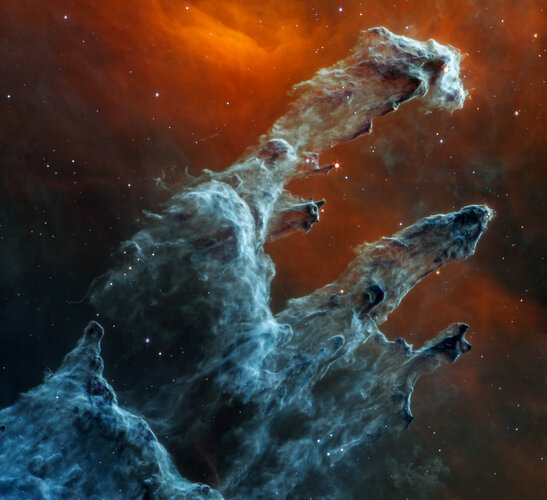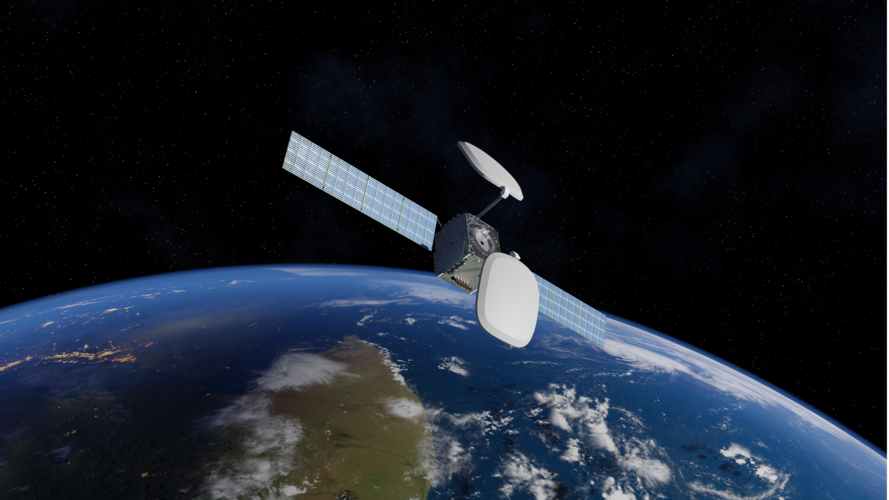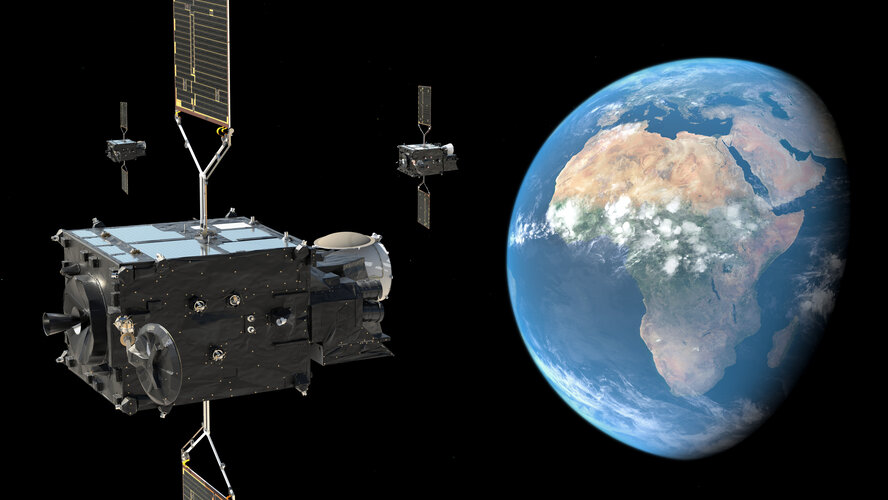
Copernical Team
NASA Moon rocket launch delayed again, this time by storm
 NASA again rescheduled its long-delayed uncrewed mission to the Moon on Tuesday as Tropical Storm Nicole churned toward the east coast of Florida, officials said.
A launch attempt, which had been scheduled for November 14, will now take place on November 16, Jim Free, a senior official at the US space agency, said on Twitter.
It is the third delay of the highly-anticipated launch in as m
NASA again rescheduled its long-delayed uncrewed mission to the Moon on Tuesday as Tropical Storm Nicole churned toward the east coast of Florida, officials said.
A launch attempt, which had been scheduled for November 14, will now take place on November 16, Jim Free, a senior official at the US space agency, said on Twitter.
It is the third delay of the highly-anticipated launch in as m How MIRI became Webb's coolest instrument
Meet the SME Office at Space Tech Expo

ESA's SME Office welcomes startups and SMEs to its booth at this year’s Space Tech Expo, a space technology trade fair and conference in Bremen, Germany from 15–17 November.
How MIRI became Webb’s coolest instrument

The NASA/ESA/CSA James Webb Space Telescope is widely referred to as the successor to the NASA/ESA Hubble Space Telescope. In reality, it is the successor to a lot more than that. With the inclusion of the Mid-InfraRed Instrument (MIRI), Webb also became a successor to infrared space telescopes such as ESA’s Infrared Space Observatory (ISO) and NASA’s Spitzer Space Telescope.
First small geostationary HummingSat sold

Satellite operator Intelsat has placed an order for the first small geostationary “HummingSat” developed as part of ESA’s efforts to support fast, dynamic and agile private space firms in Europe.
SpiderOak wins contract with DoD to demonstrate OrbitSecure Zero-Trust Protocol On-Orbit
 SpiderOak, the leader in complete cybersecurity solutions for next generation space systems, has been awarded a contract by the U.S. Defense Innovation Unit (DIU) to deliver the company's OrbitSecure zero-trust protocol on-orbit. The project will demonstrate end-to-end cybersecurity for the Department of Defense's future Hybrid Space Architecture, an initiative the U.S. Congress has begun referr
SpiderOak, the leader in complete cybersecurity solutions for next generation space systems, has been awarded a contract by the U.S. Defense Innovation Unit (DIU) to deliver the company's OrbitSecure zero-trust protocol on-orbit. The project will demonstrate end-to-end cybersecurity for the Department of Defense's future Hybrid Space Architecture, an initiative the U.S. Congress has begun referr From Graphene to Gravity: Exploring the Physics of Emergence
 A new short volume by veteran science writer George Musser covers the concept of emergence in two domains of physics: the physics of materials (known as condensed matter) and the physics of space and time (known as quantum gravity). Both areas have gone through a mini-revolution over the past two decades. In condensed matter, physicists have realized that nature is replete with states of matter
A new short volume by veteran science writer George Musser covers the concept of emergence in two domains of physics: the physics of materials (known as condensed matter) and the physics of space and time (known as quantum gravity). Both areas have gone through a mini-revolution over the past two decades. In condensed matter, physicists have realized that nature is replete with states of matter Making History in Space
 When the world thinks of space pioneering companies with a long, proven track record of success, Northrop Grumman is top of mind. With over six decades of history in space leadership supporting multiple civil, commercial and national security space missions, the company now supports various customer launch requirements ranging from human exploration to scientific discovery, commercial communicat
When the world thinks of space pioneering companies with a long, proven track record of success, Northrop Grumman is top of mind. With over six decades of history in space leadership supporting multiple civil, commercial and national security space missions, the company now supports various customer launch requirements ranging from human exploration to scientific discovery, commercial communicat Call for Media: launch of the first Meteosat Third Generation satellite MTG-I1

Call for Media: launch of the first MTG satellite MTG-I1
Intelsat chooses SWISSto12 to build Intelsat 45
 Intelsat, operator of one of the world's largest integrated satellite and terrestrial networks and leading provider of inflight connectivity (IFC), has announced that scale-up manufacturer SWISSto12 will produce the Intelsat 45 satellite (IS-45). With the order, Intelsat becomes the first commercial customer for the innovative HummingSat geostationary (GEO) telecommunications product.
Sche
Intelsat, operator of one of the world's largest integrated satellite and terrestrial networks and leading provider of inflight connectivity (IFC), has announced that scale-up manufacturer SWISSto12 will produce the Intelsat 45 satellite (IS-45). With the order, Intelsat becomes the first commercial customer for the innovative HummingSat geostationary (GEO) telecommunications product.
Sche 
